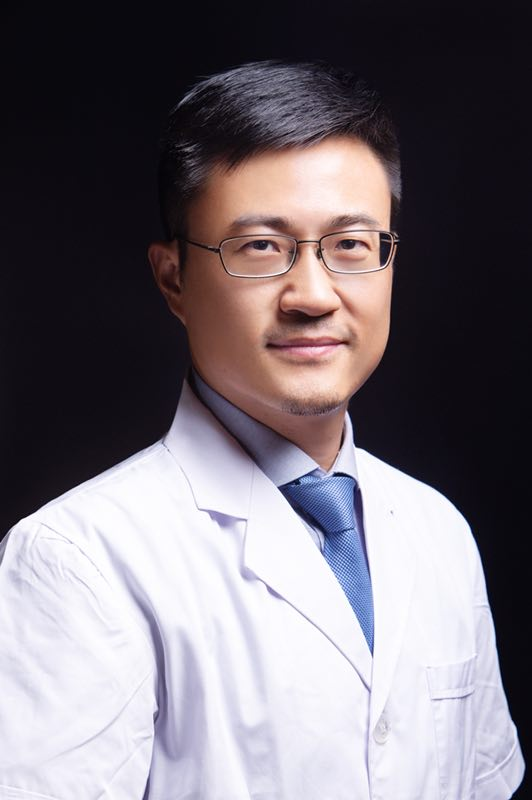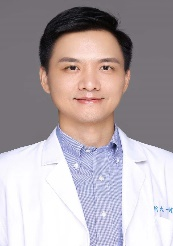Hongkun Zhang
Chief of Department of Vascular Surgery, The First Affiliated Hospital, Zhejiang University School of Medicine
Professor (Doctoral Supervisor)
E-mail: doczhk@163.com

Thoracic endovascular aortic repair (TEVAR) is the main treatment of thoracic aortic disease, but in the treatment of aortic dissection, aneurysm and other lesions, often need to rebuild the arch artery to maintain cerebral blood flow, but due to the lack of proper branch artery reconstruction technology, full cavity repair technology treatment of aortic arch dissection and aneurysm is often difficult to achieve, has been the difficult and hot spot in the field.
In-situ fenestration technology (in-situ fenestration, ISF) refers to the technique of covering the arch artery to obtain sufficient proximal anchor area, and then open the membrane, expand the balloon and implant the branch graft to restore branch blood flow. It can use the existing well-established conventional aortic covered stent products to directly reconstruct the aortic arch branch artery according to the individual patient, without pre-customization, which is an ideal full-cavity repair technology. The center took the lead in China to explore the development of acupuncture in situ fenestration technology to reconstruct the aortic arch branch artery, and improved the safety and effectiveness of in situ fenestration technology by innovating various techniques such as acupuncture-assisted fenestration technology, slow increasing balloon dilatation technology, vagal vertebral artery reconstruction technology and simplified cardiopulmonary bypass brain protection technology. Further establish standard operating norms, technical procedures and complication prevention and treatment strategies, and lead in writing the international first expert consensus on related technology, so as to improve the efficacy and reduce the occurrence of complications, and promote the promotion and application of this technology.
Innovation point 1: Innovation technology to improve the safety and effectiveness of in-situ window opening technology.
1.1 It is the first time to carry out a comparative study of different fenestration methods in the world, and it is clear that the acupuncture-assisted fenestration technology has higher safety and solves the problem of selecting window opening tools. The results were published in the International Annals of Vascular Surgery (Ann Vasc Surg 2021; 77:280-287.).
1.2 The selective and slowly increasing balloon expansion method was proposed for the first time in the world, so as to achieve better quality of window opening openings and solve the problems of internal leakage related to fenestration and long-term stability of stents. The study was published in the International Journal of endovascular Treatment (J Endovasc Ther. 2021; 28 (2): 300-308.).
1.3 The first application of in situ fenestration technology was used in the world to reconstruct the vagal left vertebral artery, which solved the application problem of in situ fenestration technology under complex anatomical conditions. Relevant technical experience and clinical results have been published in the International Journal of Frontiers in Cardiovascular Medicine (Front Cardiovasc Med 2023; 10:1055549.).
1.4 For the first time in the world, the technology of simplified cardiopulmonary bypass combined with left carotid artery priority window opening is proposed to solve the problem of intraoperative cerebral blood perfusion protection. Relevant research experience and clinical results have been published in the International Vascular Professional Top European Journal of Vascular Surgery (Eur J Vasc Endovasc Surg 2018; 55 (3): 369-376.).
Innovation point 2: establish the process to promote the standardization of in-situ window opening technology.
2.1 It takes the lead in establishing a standardized in-situ window opening technical process in China, including the selection of indications, selection of window tools, characteristics of main stent opening, branch stent selection, etc. The results have been published in the authoritative domestic medical journals (J Zhejiang Univ (Med Sci), 2018,47 (6): 617-622.), the top journal of vascular surgery (Chinese Journal of Vascular Surgery, 2022,07 (3): 213-216; Chinese Journal of Vascular Surgery (electronic edition), 2021,13 (1): 8-12.) and the International Journal of Cardiovascular Medicine (Front Cardiovasc Med 2022; 9:1056229.).
2.2 The comprehensive prevention and treatment strategy of complications of in-situ window opening technology was first proposed in China, and the system theory of related focus issues was formed. The results have been published in the international authoritative journal of vascular interventional medicine (J Vasc Interv Radiol. 2018; 29 (6): 833-840.), the domestic top journal of vascular surgery (Chinese Journal of Vascular Surgery (electronic edition), 2022,14 (2): 109-113.) and the International Frontier Journal of Cardiovascular Medicine (Front Cardiovasc Med 2022; 9:1056229.)
Innovation point 3: take the lead in the acupuncture in situ window opening technology, and promote the application.
Innovative content: the first to apply the acupuncture in situ window opening technology in China, the first to reveal good single-center cohort application results, actively promote the development of domestic and provincial related technology; and the acupuncture in situ window opening technology was applied to the full aortic arch repair for the first time, solving a part of patients who originally need to accept thoracotomy aortic replacement, and greatly reduced the surgical trauma.The relevant research results were published in Eur J Vasc Endovasc Surg, the official journal of the European Society for Vascular Surgery, and Front Cardiovasc Med, a professional journal in the field of international circulation, and recognized by peers at home and abroad.
Innovation point 4: Summarize the technical details, standard procedures and complication prevention strategies of in-situ window opening, and form the consensus of Chinese experts.
Innovative content: The project team addressed the clinical problem of using in-situ fenestration technology to treat the disease involving the aortic arch, From the initial clinical exploration, Focusing on the technical details of the active arch situ window opening technology, the standard operation procedures, and the prevention and treatment of complications, Carry out clinical studies, in vitro simulation, biomechanical analysis, animal experiments, instrument improvement research and development and other comprehensive and systematic research, On the basis of solid research results, the project team took the lead in writing the expert consensus on the technology of technical details and standard process of aortic arch in situ window opening technology and published it in the international professional journal Front Cardiovasc Med in the field of circulation, It provides a reference for the domestic and foreign peer experts to carry out the relevant technology, Promoted the promotion and application of this technology at home and abroad
The main topics are in-depth discussion of aortic lesions, especially aortic dissection lesions and the selection of various surgical methods, as well as new techniques of interventional treatment, and arrangements for surgical and interventional treatment observation, special medical history discussion, on-site Q&A, etc. we also aim to provide our advanced trainees a strong foundation in clinical investigation to launch them into successful careers in academic medicine. Dedicated research time and resources will allow our trainees to develop and execute independent research projects with the appropriate mentorship.
The program provides a full-time, 2-week to 6-month training experience. In special circumstances, arrangements can be made for other lengths of training depending on your needs and interests.
• Fellows: Must have completed a general surgery residency program at an accredited institution.
• Residents: To be eligible for the general surgery residency , you must have successfully completed a board-approved program in general surgery. Your general surgery program may be completed either through Mayo Clinic School of Graduate Medical Education or another accredited program.
• Students:
1. Must be a final-year medical student when you are scheduled to participate in the rotation. This means all your core / required clerkship rotations are complete at the time of the clinical elective.
2. Medical School Approval - Letter of good standing from the dean’s office of your medical school indicating you are in the final year with your expected graduation date, in good academic standing and meet all requirements to complete an elective for academic credit.
Focus Areas & Subspecialties:
1. Aortic Dissection, AD
2. Aortic Arch Aneurysm, AAA
3. Aortic Arch Dissection
4. Thoracic endovascular aortic repair (TEVAR)
5. In-situ fenestration technology (in-situ fenestration, ISF)
Monday
1st Week: introduction & welcome, program overview and objectives, department introduction
Weekly: MDT conferences, complicated case study
Weekly: mentor one-on-one training:
-Topics:
Aortic Dissection, AD
Tuesday
Weekly: outpatient observation, academic lecture, basic surgical skills training
Biweekly: mentor one-on-one training
Wednesday
Weekly: clinical rounds, TEVAR surgery observation
Biweekly: simulated surgery training
Thursday
Weekly: complicated case study, case-based discussion
Biweekly: surgery hands-on
Friday
Weekly: journal club, clinical rounds, clinical skills training, special task training
Last Week: wrap-up & reflection, participant presentations or discussion of key takeaways, feedback session (e.g. online survey or live Q&A)
After each rotation, each faculty member evaluates each fellow according to core competencies of patient care, medical knowledge, practice-based learning and improvement, interpersonal and communication skills, professionalism, and system-based practice. Faculty members meet with fellows individually for verbal feedback and evaluation. For In-situ fenestration technology, technical competence is evaluated through specifically designed evaluation forms, a simulator laboratory, and through a semiannual skills assessment program. Monthly, an aggregate evaluation of a fellow’s clinical progress is conducted through a clinical competency faculty committee.

Chief of Department of Vascular Surgery, The First Affiliated Hospital, Zhejiang University School of Medicine
Professor (Doctoral Supervisor)
E-mail: doczhk@163.com

Deputy Director of Vascular Surgery, The First Affiliated Hospital, Zhejiang University School of Medicine
Master's Supervisor
E-mail: doclidonglin@163.com

Deputy Director of Vascular Surgery, The First Affiliated Hospital, Zhejiang University School of Medicine
Master's Supervisor
E-mail: wuziheng@163.com
The program is free of charge.